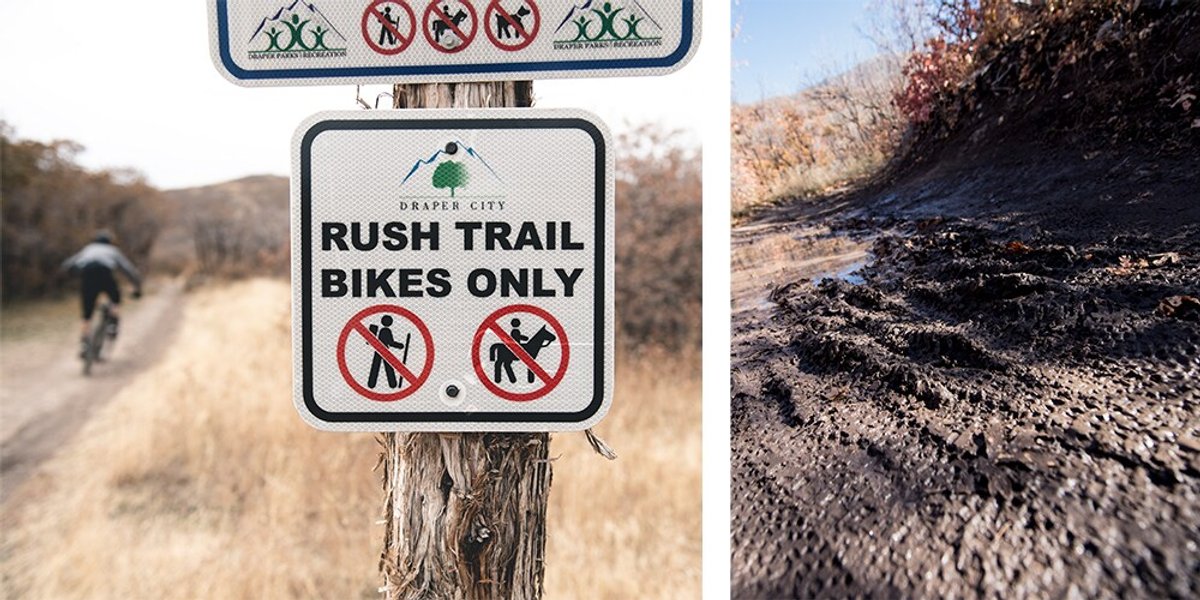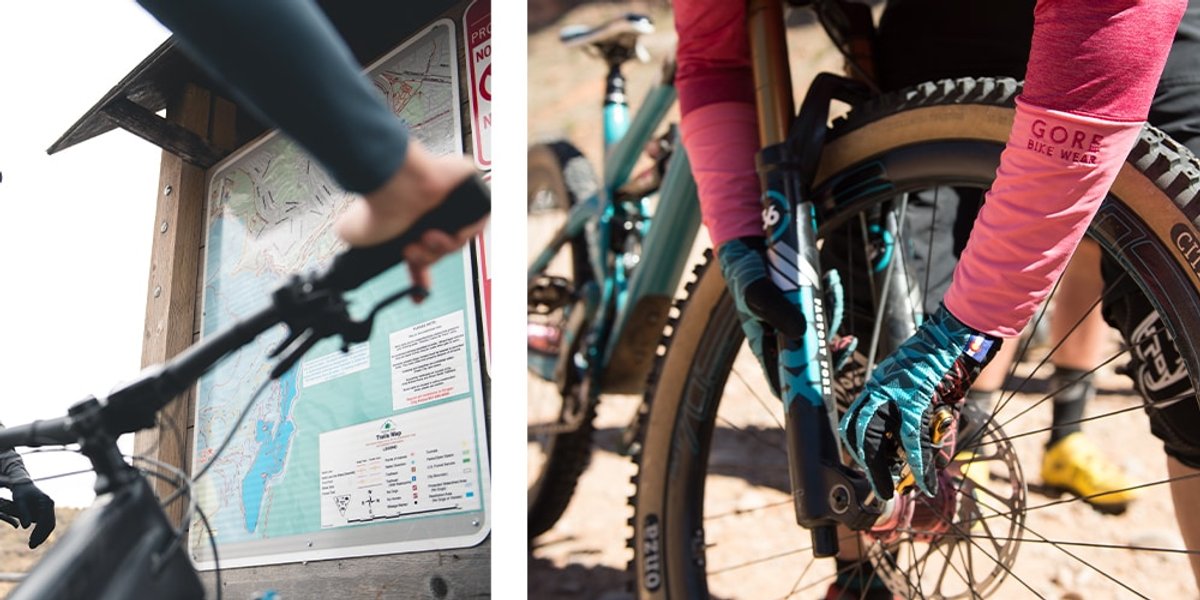
Mind Your Manners: Mountain Bike Trail Etiquette
How to be a better-behaved biker
Practicing proper mountain bike trail riding etiquette makes a difference every time you hit the trails. You’ll enjoy a safer ride, preserve trail access for future rides, and maybe even make some friends along the way.
Because trail etiquette affects so many aspects of the sport, the International Mountain Bike Association (IMBA) developed six “Rules of the Trail” for being a polite and responsible rider. Here’s our guide to the IMBA-approved list of mountain bike rules:

Ride on Open Trails Only: Stick to riding trails that are open to bikers, and always respect trail closures or day-based directional rules. Following the rules might seem contrary to mountain biking’s rebellious roots, but it’s actually what’s made our community so strong. The public access we enjoy today is thanks to avoiding trespassing on private land and obtaining required permits or authorization.
Following this rule of mountain bike trail etiquette is also essential if we want to gain access to new areas for mountain biking. And you should always steer clear of protected land that doesn’t allow bikers. It’s illegal to ride a bike on land designated as a state or federal wilderness area.
Leave No Trace: No list of rules is complete without a reminder to leave the trails as you found them—or better. This means you should:
- Avoid wet and muddy trails, which are susceptible to rutting and damage.
- Not cut switchbacks or create cheater lines.
- When you yield to other users, pull to the edge of the trail, not off the trail.
Leaving no trace also means packing out whatever you packed in— yes, that includes the top tab of the energy gel you just downed. Level up your etiquette and pick up trash when you see it.

Control Your Bike: Getting stoked and sendy is what mountain biking is all about, but try not to lose control. Being a responsible, safety-minded mountain biker means you make it a point to adhere to speed regulations and recommendations, and always ride within your limits.
Yield to Others: One of the most common questions about mountain bike etiquette is, “Who has the right of way?” The conventions for yielding and passing vary from area to area, but mountain bikers should generally yield to all other trail users.
Then there’s the age-old question: “Do uphill or downhill riders have the right of way?” Unless otherwise noted, yield to the uphill riders. Use your eyes and ears to anticipate other users on the trail. When rounding blind corners, slow down, and call out or ring a bell to let other users know you’re coming.

Respect Animals: Mountain bikes make it easy to sneak up on animals. Whether you’re approaching wildlife or a person on horseback, it’s easier than you think to startle an animal and create a dangerous situation. Just think about who will win in a face-off between a 1,500 lb. horse and you on your carbon fiber trail bike. With this in mind, give animals room and time to adjust to your presence. Don’t assume an animal notices you, and don’t ever sneak up on them intentionally.
Plan Ahead: The IMBA’s final guideline for mountain bike etiquette is to strive for self-sufficiency and safety. Before you visit a trail system, do some research to ensure that:
- The trails and conditions are within your ability level.
- Your bike is in good working order.
- You’re prepared with the necessary tools and parts to make common trailside repairs—a spare tube or tubeless repair kit, tire levers, a multi-tool, a pump or CO2 inflator, and a replacement chain link. I like to tuck a small first-aid kit into my pack as well for human repairs.
- You have enough food and water to sustain yourself for a ride.
- You’re wearing a helmet!

Mind Your Mountain Bike Manners
The IMBA has done an excellent job of laying out these general ground rules, but you can build on these tips to create a skilled and conscientious community of riders:
- Just Be Nice: Say hello and thank you to fellow trail users. It doesn’t cost anything, and it goes a long way in creating goodwill toward mountain bikers. Be a smiling, friendly mountain biker.
- Shout Out Your Group: If someone pulls over to let you pass, let them know if more riders are coming along behind you. A simple “just me” or “two more” will let the person know what to expect and when the trail is clear.
- Step Aside: Speaking of passing, no matter how speedy you are on the bike, there is almost always someone quicker. It’s proper bike etiquette for the slower rider to pull aside—when there’s room to do so safely—and let the faster rider pass.
- Resist Tailgating: Riding too close to another rider can cause accidents. If you find yourself behind a slower rider, call out that you’d like to pass and give them a chance to pull out of the way safely. Of course, don’t forget to say thank you.
- Stay Out of the Way: Whether you’re stopped at a trailhead or fixing a flat, it’s inconsiderate―not to mention dangerous―to block the trail by spreading out across it. Find a safe place to stop that’s off the main path.
These tips and rules will help you have a safer, friendlier day on the trails, but you don’t need to memorize each of them to be a responsible mountain bike rider. When in doubt, remember the golden rule: treat others how you’d like them to treat you. If we all do our best to follow this advice, the trail will be a better place for riders of all experience levels.
A former child model, Tim Peck spent a portion of his youth gracing the pages of Sunday paper advertisements for many now-defunct department stores. Living responsibility/rent-free with his parents into his thirties, Tim pursued climbing, skiing, and biking while accumulating an impressive amount of time in the mountains (and gear). Relentlessly pursuing the dream, Tim’s modest life ambitions are to ski all 12 months of the year, to climb 5.12, and to live in a van.